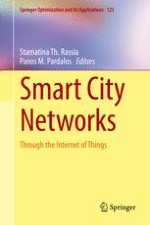2017 | OriginalPaper | Chapter
Systems Science Simulation Modeling to Inform Urban Health Policy and Planning
Authors : Yan Li, Jo Ivey Boufford, José A. Pagán
Published in: Smart City Networks
Publisher: Springer International Publishing
Activate our intelligent search to find suitable subject content or patents.
Select sections of text to find matching patents with Artificial Intelligence. powered by
Select sections of text to find additional relevant content using AI-assisted search. powered by
